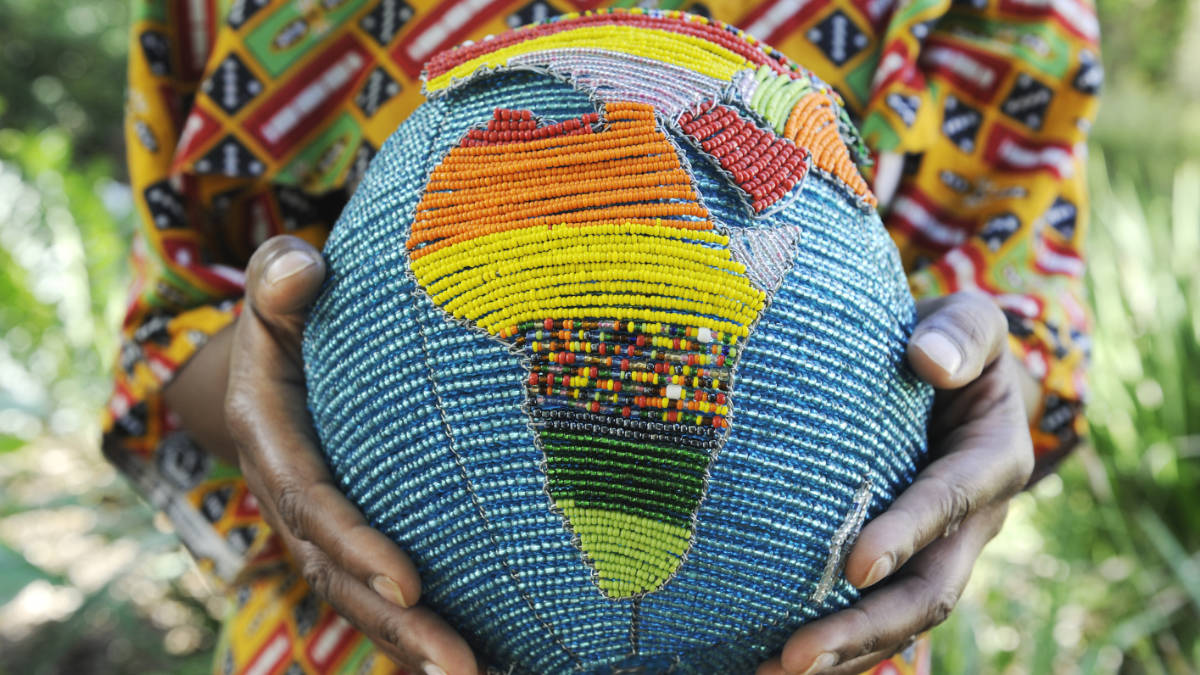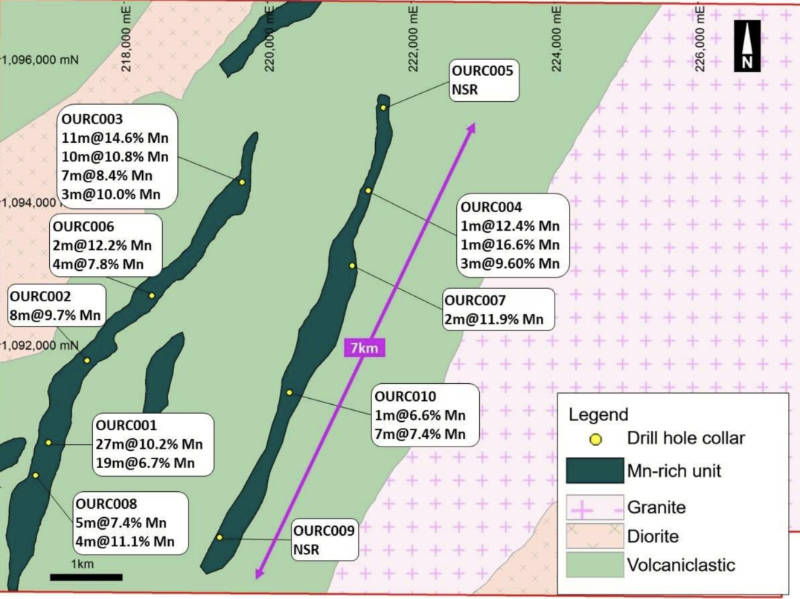Mako drilling uncovers potentially ‘globally significant’ manganese deposit at Korhogo

Mako has made a shallow manganese discovery in Côte d’Ivoire, a global top 10 producer of the battery metal. Pic: David Malan via Getty Images
- Drilling uncovers shallow manganese discovery at Mako’s Korhogo project
- Côte d’Ivoire is a global top 10 producer of manganese
- Manganese is finding growing use in batteries for electric vehicles
Maiden drilling at Mako’s Korhogo project in Côte d’Ivoire has uncovered a potentially significant manganese discovery from surface, with assays grading up to 19% of the increasingly valuable metal.
Manganese has found increasing use in lithium-ion batteries where it acts as a key stabilising component in the cathodes of nickel-manganese-cobalt (NMC) chemistry batteries whilst increasing energy density, which serves to increase driving range when used in electric vehicles.
Mako’s discovery in Côte d’Ivoire is also fortuitous as the country is one of the 10th largest producers of the metal in the world with four producing mines – including Shiloh Mining’s Lagnonkaha manganese mine that is 70km along strike from Korhogo – producing 360,000t in 2022.
Mako Gold (ASX:MKG) said today eight of company’s shallow 10-hole reconnaissance reverse circulation holes intersected multiple, wide zones of mineralisation.
Highlight hits include:
Hole 1 — 27m at 10.2% Mn from surface (including 7m at 14.0% Mn from surface) and
- 19m at 6.7% Mn from 31m.
Hole 3 — 11m at 14.6% Mn from surface; and
- 10m at 10.8% Mn from 15m;
- 7m at 8.4% Mn from 36m; and
- 3m at 10% Mn from 47m.
Both holes ended in mineralisation, which indicates that might be more manganese to be found at depth.
“We are extremely excited with the results of our very first drill program at the Korhogo project testing for manganese,” managing director Peter Ledwidge said.
“Eight out of the ten holes we drilled across the interpreted 14 km combined strike intersected manganese.
“These results confirm the potential for a globally significant manganese discovery.
“Given the high prospectivity of the deposit, I spent several days on the project in July and observed first-hand the sheer extent of the manganese outcropping at surface.
Mako will follow up the drill program with a detailed mapping and rock-chip sampling program.
“Subsequent to that we will conduct a ground geophysical survey to assess the width and depth,” Ledwidge said.
“Both of these programs will assist us in targeting the high-grade core of the manganese units for future drilling.”

Growing demand for manganese in batteries
Almost half of today’s lithium-ion batteries include manganese, and projections from market research firm CPM Capital have that figure jumping above 60% by 2030.
“A total of 103 new projects are required of an average size by today’s standards, with each producing about 30,000t of high purity manganese sulphate,” it says.
“The world has about 15 of those in the pipeline, nine of which are in China.”
Highlighting this growing demand, Element 25 (ASX:E25) recently signed a deal to supply General Motors with 32,500tpa of manganese sulphate for seven years.
This is in conjunction with the metal’s traditional use in steel-making where it both decreases the brittleness of steel whilst imparting additional strength.
Korhogo project
The wholly-owned Korhogo project consists of the Ouangolodougou permit, where the drilling was carried out, and the Korhogo Nord permit.
Drilling was carried out over two parallel manganese-rich lithological units, each of which are over 7km in strike length, to test for sub-surface manganese mineralisation.
Average spacing of the 10-holes was about 1km with each hole drilled to a down-hole depth of only about 50m.
Multiple wide zones of manganese were intersected in several holes with two holes being mineralised throughout most of the hole and ended in mineralisation.
There is also potential for more to be found given that just 257m of 500m drilled have been analysed to date.
Structural mapping has shown that the manganese units are sheared and steeply dipping. Holes were drilled in various directions depending on the orientations measured on outcrops at various locations.
Mako also noted that the intersected grade is similar to several ASX-listed manganese focussed producers/developers.
The results indicate that the mineralised zone could be much more extensive, and very likely much deeper, which grants Korhogo potential to host a world-class resource given that the targeted manganese units have greater potential strike than the 1.6km strike of the Lagnonkaha mine.
More exploration to come
Mako plans to carry out detailed mapping and rock-chip sampling over the twin 7km manganese-rich zones to produce a detailed geology map which will highlight the higher-grade areas for follow-up work.
Once results are received from the rock chip sampling, the highest priority areas will be selected for a ground induced polarisation geophysical survey to outline the deposit at depths of up to 100m, highlight the higher-grade areas and importantly identify the width and dip direction of the deposit for future drilling.
The company has also selected a consultant to complete preliminary metallurgical testing on a 160kg sample of manganese rock taken from the best area determined by mapping, rock chip sampling and IP surveying.
A sequence of tests will be carried out to prioritise economic recoveries of coarse manganese at saleable grade for steel production with relatively simple flowsheet options.
Once all this work is completed, a wide-spaced diamond drilling and RC drilling program will be planned.
This article was developed in collaboration with Mako Gold, a Stockhead advertiser at the time of publishing.
This article does not constitute financial product advice. You should consider obtaining independent advice before making any financial decisions.
Related Topics
UNLOCK INSIGHTS
Discover the untold stories of emerging ASX stocks.
Daily news and expert analysis, it's free to subscribe.
By proceeding, you confirm you understand that we handle personal information in accordance with our Privacy Policy.








